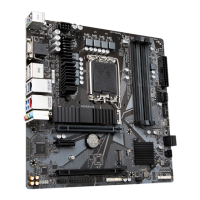
Do you have a question about the Gigabyte Q670M D3H and is the answer not in the manual?
| Processor manufacturer | Intel |
|---|---|
| Compatible processor series | Intel Celeron, Intel Core i3, Intel Core i5, Intel Core i7, Intel Core i9, Intel Pentium G |
| Supported processor sockets | LGA 1700 |
| Maximum internal memory supported by processor | 128 GB |
| Non-ECC | Yes |
| Memory channels | Dual-channel |
| Memory slots type | DIMM |
| Number of memory slots | 4 |
| Supported memory types | DDR4-SDRAM |
| Supported memory clock speeds | 5600, 5400, 5200, 4800, 4000 MHz |
| Wi-Fi | No |
| Ethernet interface type | 2.5 Gigabit Ethernet |
| USB 2.0 connectors | 2 |
| USB 3.2 Gen 1 (3.1 Gen 1) connectors | 1 |
| DisplayPort version | 1.2 |
| USB 2.0 ports quantity | USB 2.0 ports have a data transmission speed of 480 Mbps, and are backwards compatible with USB 1.1 ports. You can connect all kinds of peripheral devices to them. |
| VGA (D-Sub) ports quantity | 0 |
| USB 3.2 Gen 1 (3.1 Gen 1) Type-A ports quantity | 3 |
| RAID levels | 0, 1, 5, 10 |
| Supported storage drive types | HDD & SSD |
| Supported storage drive interfaces | M.2, SATA III |
| Cables included | SATA |
| BIOS type | UEFI |
| ACPI version | 5.0 |
| BIOS memory size | 256 Mbit |
| Desktop Management Interface (DMI) version | 2.7 |
| Parallel processing technology support | - |
| Cooling type | Active |
| Component for | PC |
| Power source type | ATX |
| Motherboard chipset | Intel Q670 |
| Audio output channels | 7.1 channels |
| Motherboard form factor | micro ATX |
| Windows operating systems supported | Windows 10, Windows 11 |
| Width | 244 mm |
|---|
Provides a visual diagram and labels of motherboard components for identification.
Essential safety and handling guidelines before installing hardware to prevent damage.
Details technical specifications of the motherboard, including CPU, chipset, memory, and graphics.
Step-by-step guide for installing the CPU and its cooler safely and correctly.
Instructions for installing RAM modules, including dual channel configuration.
Procedures for installing expansion cards like graphics or network cards into available slots.
Explains the various ports located on the motherboard's rear I/O panel for external devices.
Details the internal headers and connectors on the motherboard for system components.
Describes the initial GIGABYTE logo screen that appears when the computer boots.
Explains the key presses for accessing BIOS Setup and Boot Menu for system configuration.
Guide for installing the OS, including necessary drivers like Intel RST for RAID.
Instructions for installing GIGABYTE drivers and applications via APP Center.
Explains how to set up RAID arrays using SATA or M.2 storage devices for data redundancy or performance.
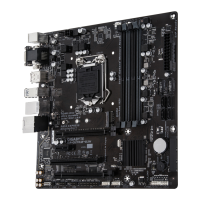




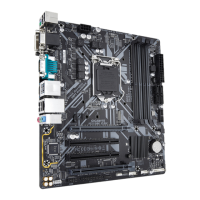
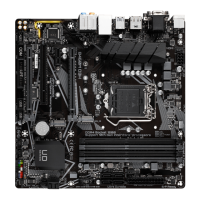


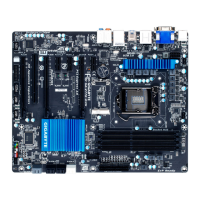


